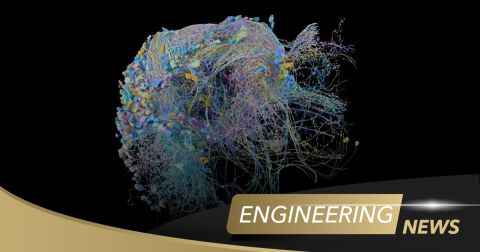Getting Closer to Creating an Unlimited Power Source with Artificial Suns

Graphical representation of a Tokamak fusion reactor (Image source: pixabay.com)
Many of us spend a lot of time patting ourselves on the back and telling ourselves how clever we are as a species. We often hear claims that the total sum of human knowledge is doubling every ‘X’ years, where the value of ‘X’ depends on who you are talking to. The inventor and visionary Richard Buckminster Fuller originated the concept of the “Knowledge Doubling Curve,” as part of which he observed that – prior to 1900 – human knowledge doubled every century. In 1945, at the end of WWII, it is now estimated that knowledge was doubling every 25 years. Sometime around 2015, it is believed that knowledge began to double every 12 months. Goodness only knows what the rate was this morning when I broke my fast.
On the other hand, we might also observe that the human race has been lurching from one disaster to another since time immemorial. Somewhere around 70,000 years ago, for example, we came dangerously close to dying out as a species. Genetic research has revealed that, due to one or more natural disasters (a massive super volcano eruption in Indonesia is one widely supported theory), the global population of humans fell to only a few thousand individuals.
In additional to the usual problems we inflict upon ourselves, like wars caused by desire for resources and clashes of ideologies, there are currently a number of “whoppers” on the problem front, including increasing population (currently expected to reach 9.8 billion in 2050 and 11.2 billion in 2100), climate change (melting glaciers, ice caps, and ice sheets leading to rising sea levels, coupled with widespread droughts, fires, and floods), shortages of fresh water (two-thirds of the world's population may face water shortages by 2025), and vast numbers of people with insufficient access to food (around 900 million people are suffering from chronic undernourishment at the time of this writing).
In many ways these problems are interrelated. Take our ever-increasing energy consumption, for example. This generates vast quantities of greenhouse gases like carbon dioxide (CO2), which is driving climate change in general and global warming in particular. (The vast majority of scientists are in agreement that the climate is changing and that humans are driving this change; by comparison, many politicians around the world either deny that the climate is changing at all, or they refuse to believe that human activities are a causal factor.) Also, there is an almost unbelievable number of gasoline (and diesel) powered cars in the world spewing greenhouse gases into the atmosphere (in 2010, it was estimated that over 1 billion passenger cars were ferrying people around).
On the other side of the coin, access to vast quantities of cheap, non-polluting energy could be used to address many of our problems, but where is this energy to come from? The increasing use of renewable energy – predominantly solar, wind, and hydroelectric – is a tremendous step in the right direction, but there are major problems with regard to storing the energy generated from these sources so as to make it available on demand. Increasingly, it appears that nuclear energy generated by fusion reactors may be the answer to many of our problems. Thus far, however, fusion has proved to be an elusive goal, but things may be about to change.
Feel the Fusion
There are two main categories of nuclear reactions. Our current nuclear power stations are based on fission in which the nucleus of an atom splits into two or more smaller, lighter nuclei, releasing a tremendous amount of energy in the process. The problems with these reactors include the possibility of radiation-releasing accidents (e.g., Fukushima in Japan, Chernobyl in what was then part of the Soviet Union, and the near-miss at Three Mile Island in the USA) and the possibility of contributing to nuclear weapons proliferation. Perhaps the most significant problem is that of disposing the toxic radioactive waste products ensuing from this form of reactor.
The alternative is nuclear fusion, in which two or more atomic nuclei are combined (fused together) to form one or more different atomic nuclei and subatomic particles, where the difference in mass between the reactants and products is manifested as energy.
Scientists and engineers around the world have been working on the problem of nuclear fusion for more than 40 years with only limited success, but there is hope that things are poised for change. A wide variety of alternative reactor architectures are being evaluated around the world. As illustrated in this video, two popular contenders are the Tokamak and the Stellarator.
The reason for my meandering musings here was the recent news regarding China’s progress with its HL-2M Tokamak reactor. A short teaser article on Futurism.com announced, somewhat breathlessly, that China Expects Its “Artificial Sun” to Be Operational in 2020. A more measured Newsweek column, China Is About to Fire Up Its 'Artificial Sun' in Quest for Fusion Energy, noted that a lot of testing and development remains to be done. Still and all, the prospects for nuclear fusion appear to be improving in leaps and bounds.
Hope for the Future
If (hopefully, when) nuclear fusion power stations come online, they will change everything. As opposed to having a small number of large fission reactors, each of which generates radioactive waste that will plague humanity for thousands of years, it will be possible to have a large number of smaller fusion reactors generating almost no waste whatsoever.
The results of having access to such a source of energy are manifold. In the case of automobiles, for example, the energy from fusion reactors can be used to split water into hydrogen and oxygen, with the former being used to power cars via hydrogen fuel cells whose only waste product is... water vapor.
Furthermore, in existing fusion reactors, energy is released when the nuclei of the hydrogen isotopes tritium and deuterium are fused to create helium and a neutron. Unfortunately, the so-called "fast" neutrons released by this reaction are hard to contain and result in significant loss of energy loss. One exciting alternative is to fuse helium-3 and deuterium nuclei to create normal helium and a proton, along with lots of energy. This "aneutronic" (power without neutrons) process is easier to contain and wastes far less energy.
One of the problems with using helium-3 is that it’s incredibly rare on Earth. However, the moon, which isn’t protected by a magnetic field, has been bombarded with helium-3 carried by the solar wind for billions of years. Furthermore, in 2018, the presence of Water Ice was Confirmed on the Surface of the Moon. With water, energy, and raw materials, there is nothing we can’t achieve.
According to the article Apollo’s Legacy Is NASA’s Future, current plans are for astronauts to land on the Moon’s South Pole (where the majority of the water ice is located) as early as 2024.
You may say that I’m being overly optimistic, but I believe that – within my lifetime – we (the human race) will have permanent bases on the moon where we will be mining water, growing food, and gathering helium-3 for use in fusion reactors back home on Earth. Meanwhile, access to essentially unlimited quantities of cheap, non-polluting energy on Earth will allow us to tackle many of the problems we currently face. A pipedream? Perhaps. But I, for one, prefer to see the glass as being half full – how about you?









